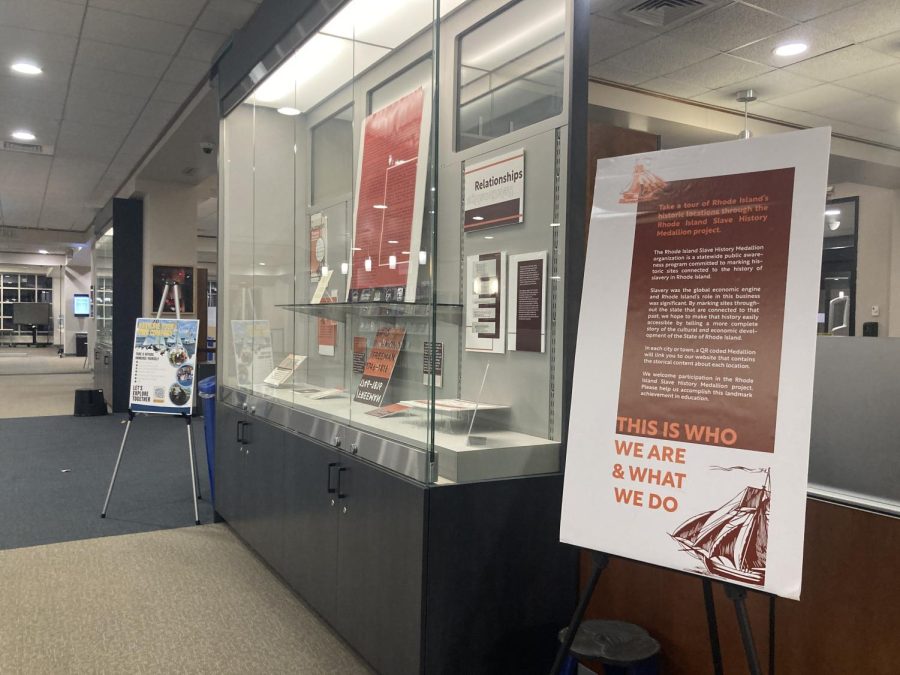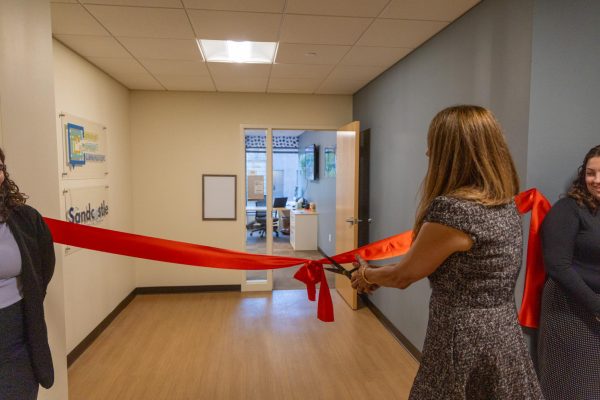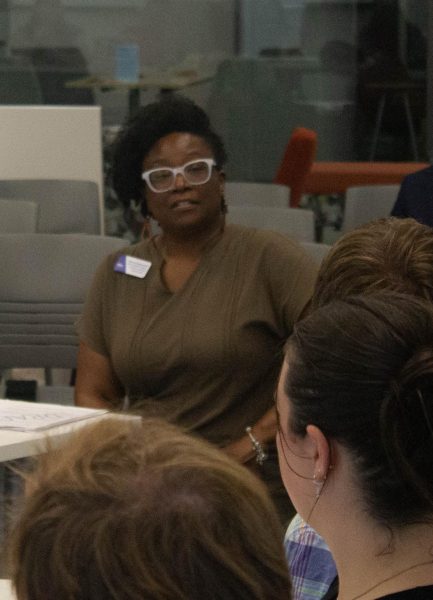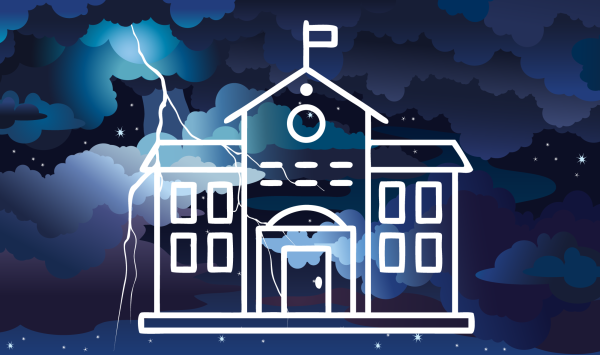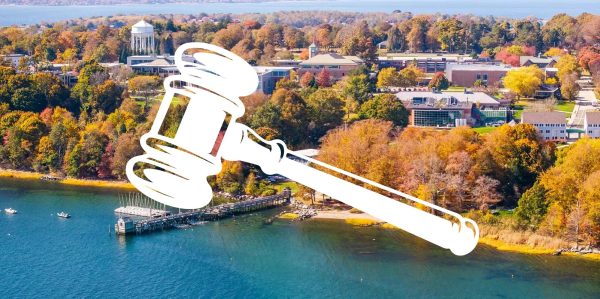Reshaping the way slavery is taught In Rhode Island
Roger Williams University is featuring an exhibit in the library on the history of slavery in Rhode Island until the end of the semester. Professor Charlotte Carrington-Farmer’s history class and citizen designer class students collaborated on the project.
“History students have the skills to read and graphic design students can create a bright design for the exhibit,” said Carrington-Farmer. They worked with many groups including the RWU Community Partnership Center, Rhode Island Slave History Medallion Project (RISHM) and the Barrington Preservation Society.
Through these important partnerships, the Rhode Island Slave History Medallion Organization has installed medallions throughout the state of Rhode Island to showcase their statewide public awareness program on historic sites that relate to the history of slavery. Each medallion has a QR code for people to scan and learn more.
Carrington-Farmer’s history class did extensive research on the history of slavery in Bristol, R.I. Students presented their projects on June 19, 2021, at the Linden Place Museum in Bristol. The Linden Place Museum is a mansion that was built in the 1800s by prominent merchant and slave trade owner, General George DeWolf. The Rhode Island Slave History Medallion Organization placed their first medallion at the Linden Place Museum.
At the ceremony, Carrington-Farmer and her students discussed their findings at the ceremony and WJAR 10 News covered the event. Carrington-Farmer and her students found out that there were roughly “132 enslaved people” in Bristol.
Three students: Kristen Black, Lucas Laager and Courtney Garrity from Carrington-Farmer’s history course recently completed an independent research project on the history of slavery in Barrington, R.I. Senior Kristen Black said “I believe that looking into the history of people who are often overlooked and not talked about is very important. Enslaved people were being forced to take the place of people who owned them in the Revolutionary War, and their owners would be paid for them.”
However, Black and Garrity discovered a document from Richmond Scipio who was a “free man of color in Barrington who purchased a piece of property in Barrington in 1772.” This meant that free people of color in Barrington could own land. Garrity was drawn to the Barrington project because she wanted to bring public awareness to “often ignored stories of the enslaved back into the historical narrative, whether they were African or Indigenous.”
“Working with the RWU Graphic Design Department was a new experience and taught me that the work we do in the History Department cannot and should not be limited to the halls of GHH – their work on the exhibit was crucial to the way it was received visually,” said Garrity. From the students extensive research, a medallion was recently installed at the Barrington Public Library on Oct. 2.
Carrington-Farmer aspires her students to be “independent researchers.” As an educator her commitment is to “share the hidden truths from research and by teaching the deep ethical issues against racism.” Carrington-Farmer is actively working on a new book that will be about the enslavement of the West Indians in the 18th century.
Aside from writing, Carrington-Farmer is also a co-director to the teacher’s institute in partnership with the Plimoth Patuxet Museum which received a grant from the National Endowment for the Humanities (NEH) and Institute of Museum and Library Services (IMLS). This is an important step for educators to teach the truthful history among the Pilgrims and the Native Americans to K-12 students.

Chloe Noyes is the Photo Editor of the Hawks' Herald. She is a senior studying Communications and Media Studies with a Core Concentration in Visual Arts,...

